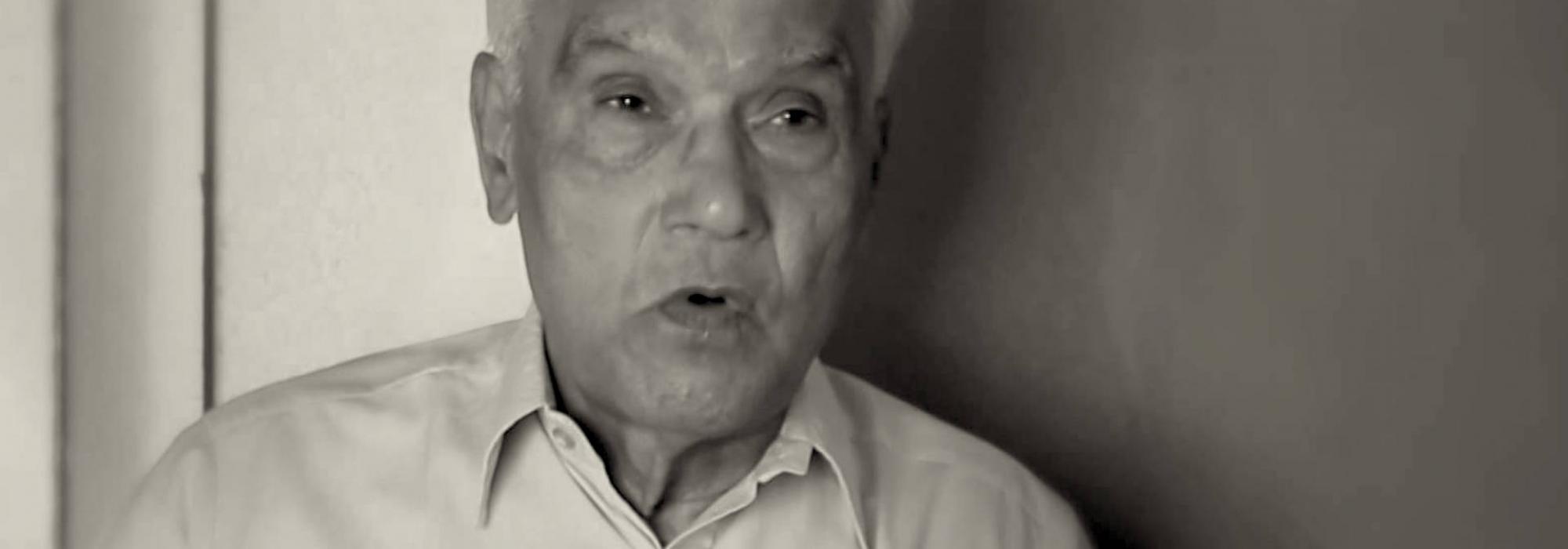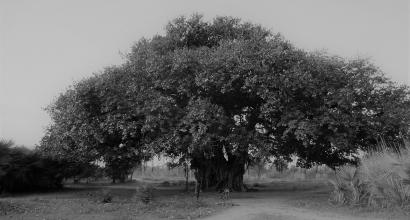Dr. S L Bhyrappa's path-breaking novel ಆವರಣ was released in 2007. About a year before the novel was published, Bhyrappa wrote an article titled 'Nationalism can Never be Strengthened by Projecting Historical Lies.' This led to a heated discussion. Bhyrappa wrote a follow-up article in response to some of his 'secularist' critics like Girish Karnad, who had unjustly tried to whitewash the atrocities committed by Islamic fanatics like Tughlaq and Tipu. Bhyrappa's second article was titled 'What would be the Fate of Truth if a Historian takes Liberties like a Fiction Author?' This is an abridged translation of the original; it first appeared in Folks Magazine on 20 May 2012.
~
I am grateful to Sri Girish Karnad, Sumatheendra Nadig, Dr. Chidananda Murthy, Dr. Suryanath Kamath, Dr. S. Shettar, Shatavadhani Dr. R. Ganesh and others who responded earnestly to my article under the title 'Nationalism can Never be Strengthened by Projecting Historical Lies.' To continue the discussions about Mohammed Bin Tughlaq and Tipu Sultan would be just an exercise in extracting more details. What we really need to do is to analyze the present political attitudes in teaching history. In order to do this, let me first present what I learnt of the nature of the prevailing political control through my own experience.
During the year 1969-70 the Central Government under Mrs. Indira Gandhi established a committee under the Chairmanship of G. Parthasarathy, a diplomat close to Nehru-Gandhi family. Its task was to integrate the nation through education. At that time I was a reader in Educational Philosophy at NCERT and was selected as one of the five members of the committee. In our first meeting Mr. Parthasarathy, as Chairman of the committee explained the purpose of our committee in typically diplomatic language: “It is our duty not to sow the seeds of thorns in the minds of the growing children which will grow up as barriers to national integration. Such thorns are found mostly in the history courses. Occasionally we can find them in language and social science courses also. We have to weed them out. We have to include only such thoughts that go towards inculcating the concept of national integration firmly in the minds of our children. This committee carries this great responsibility.”
The other four members were nodding respectfully. But I said, “Sir, I am unable to understand your words. Will you please explain with a few illustrations?” The Chairman responded: “Ghazni Mohammed looted the Somnath Temple, Aurangzeb built mosques by demolishing the temples in Kashi and Mathura, he collected jizya — is it possible to build a strong India under the present circumstances by conveying such useless facts? What purpose do they serve, other than generating hatred?”
“But are they not historical truths?” I persisted.
“Plenty of truths are there. Using these truths judiciously is the wise way to teach history,” he retorted. The remaining four members simply nodded their heads saying, “Yes, yes.” But I was not prepared to let him off.
“You yourself gave examples of Kashi and Mathura. Even today, lakhs of pilgrims from all corners of the country visit these places every year. They can see for themselves the huge mosques built using the walls, pillars and columns that once belonged to demolished temples. They can also see a recently built cow shed like shack in a corner, behind the mosque, that serves as their temple. All these pilgrims are distressed to witness such awful structures. They describe the plight of their temples to their relatives after they return home. Can this create national integration? You can hide such history in the school texts. But can we hide such facts when these children go on excursions and see the truth for themselves? Researchers have listed more than thirty thousand such ruined temples in India. Can we hide them all?”
Mr. Parthasarthy interrupted me and asked: “You are a professor of philosophy. Can you please tell us what is the purpose of history?”
“Nobody can define the purpose of history. We do not know how the things will shape up because of the development of science and technology in the future. Some western thinkers might call it the philosophy of history. But such thoughts are futile. Our discussion here should be — what is the purpose of teaching history? History is seeking out the truths about our past events, learning about ancient human lives by studying the inscriptions, records, literary works, relics, artifacts, etc. We should learn also not to commit the same blunders that our predecessors committed. We have to imbibe the noble qualities that they adopted; historical truths help us to learn all these things.”
“What if this search for truth hurts the feelings of the minority? Can we divide society? Can we sow the seeds of poison?” He tried to stop me with these questions.
“Sir, the categorization on the lines of majority and minority would itself be dividing the society, or at least a step towards dividing the society. This idea of ‘seeds of poison’ is prejudiced. Why should the minority think of Gazni Mohammed and Aurangzeb as their own people and heroes? Mughal kingdom was destroyed by the religious bigotry of Aurangzeb. It was at its height in Akbar’s time because his policy of tolerance led to religious and social harmony. Can’t we teach such lessons to children without offending the historical truths? Before teaching the lessons to be learnt from the history, should we not explain the historical truths? This idea of hiding true history is driven politics. This trend will not last long. Whether they are minority or majority, if the education does not impart the character to face the truth with emotional maturity, such education is meaningless and also dangerous.” I replied.
Parthasarathy agreed. He said he appreciated my scholarship and the ability to think clearly. During the lunch break he called me aside, indicated his closeness to me by placing his hand on my shoulders. He then said with a winning smile: “What you say is correct academically. You go and write an article about what you said. But when the government formulates a policy covering the whole nation, it has to consider the interests of all the people. Intellectually pure principles do not serve any purpose.”
Next day when we met, I stuck to my stand. I argued that history that is not based on truth is futile and dangerous. I did not budge even when Parthasarathy showed his irritation on his face. The morning session closed without arriving at any conclusion. Parthasarathy did not speak to me again. We met again after a fortnight. The committee had been re-structured, without me. In my place was a lecturer in history by name Arjun Dev known for his leftist leanings. The revised text books of science and social studies published by NCERT and the new lessons that were introduced in these texts were written under his guidance. These are the books which were prescribed as texts in the Congress and Communist ruled states or they guided the text-book writers in these States.
Later, I commented on this in a speech I gave at Alwas Nudisiri, in October 2005:
In the NCERT books for XI standard, the Ancient India part is written by the Marxist historian R.S. Sharma and the Medieval India part is by Satish Chandra, also a Marxist. When examined, one can observe that how members belonging to this group had a scheme to brainwash the minds of growing children. According to them Ashoka preached to respect even [stress is mine] Brahmins by advocating the quality of tolerance. He had banned the ritual of sacrificing the animals and birds. When the performance of yajnas was stopped due to this ban, Brahmins lost their share of dakshina (cash gifts) and their livelihood was affected. The Maurya empire disintegrated after Ashoka and many parts of this kingdom came under the rule of Brahmins.
How childish can one be — to claim that a highly influential religion that had spread all over India and even beyond declined because dissatisfied Brahmins were deprived of their dakshina (cash gifts)? Their other claim is that Muslims demolished temples to loot the riches and wealth accumulated in these temples. This explanation is supposed to rationalize their actions. In some other context they may even say the looting may be according to the laws of Sharia, which again paints the events as legally sanctioned.
Actually, Buddhism did not disappear from India after Ashoka. The truth was told by Dr. B. R. Ambedkar, a Buddhist himself. In the section, The Decline and Fall of Buddhism (Writings and Speeches, Volume III, Government of Maharashtra, 1987, pp. 229-38) he noted that after Muslim invaders destroyed the universities of Nalanda, Vikramasheela, Jagaddala, Odanthapura, etc., followed by brutal killings of the Buddhist monks, the survivors were forced to escape to Nepal, Tibet, and other neighbouring countries to save their lives. As he wrote, “The roots of Buddhism were axed. Islam killed Buddhism by killing priestly class of Buddhism. This is the worst catastrophe suffered by Buddhism in India.”
Like the Devil quoting the scriptures, Marxists quote Ambedkar whenever it is convenient for them to denigrate Hinduism, but ignore his inconvenient words like, “The decline of Buddhism in India is due to the terrifying actions of Muslims.” R.S. Sharma the author of a textbook on Ancient India (New Delhi: NCERT, 1992. p. 112) writes, “Buddha viharas attracted Turkish invaders because of their wealth. They were the special greedy targets for the invaders. Turks killed many Buddhist monks. Despite these killings, many monks escaped to Nepal and Tibet.”
Who were these Turks? Hindus? Here the clever Marxist Sharma has hidden the fact that these ‘Turks’ were Muslims who destroyed these religious places as dictated by Sharia (Islamic Law). He tries to hide this fact by calling Muslims of Turkey with only the tribal name Turkish. At the same time they (he and others) write that Buddhism declined during Ashoka’s reign because of Brahmins who were deprived of their dakshina (monetary gifts). One should appreciate their sophistry — hiding the truth about Turks being Muslims, but creating the falsehood that Brahmins deprived of dakshina were responsible for the decline of Buddhism after Ashoka. Latin rhetoricians called such a tactic suppressio veri, suggestio falsi.
Translated by Sandeep Balakrishna from the original Kannada.

















































Comments